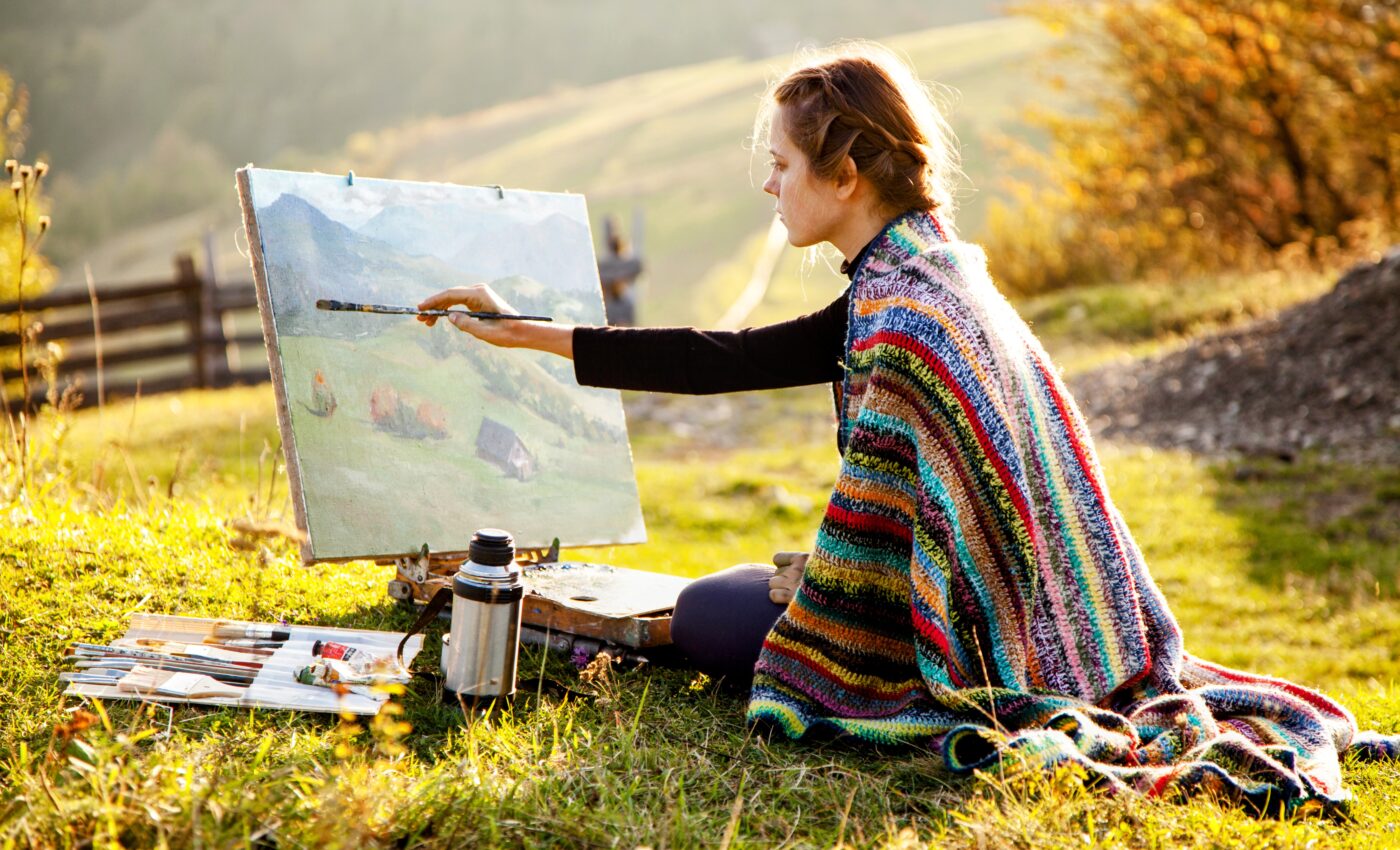
Creative people make the most of their idle time
A new study led by the University of Arizona has found that creative people are more likely to fruitfully use their idle time by engaging in original associations of ideas.
A series of experiments revealed that participants who were more creative felt less bored when being alone in a room and, during the Covid-19 pandemic – when the whole world experienced unusually extended periods of unstructured time – such people were more engaged with their thoughts and thus less prone to experience boredom.
“I am particularly interested in creativity because we wanted to know what’s going on in the mind of creative individuals, especially in situations where nothing constrains their thoughts,” said study lead author Quentin Raffaeli, a graduate student in Psychology at Arizona.
Many historical anecdotes report that famous scientists, artists, or philosophers enjoyed being alone with their thoughts, and often generated some of their best ideas during idle time. “In today’s busy and digitally connected society, time to be alone with one’s thoughts without distraction may be becoming a rare commodity,” said senior author Jessica Andrews-Hanna, an associate professor of Cognition and Neural Systems at the same university.
New approach to assessing creativity
However, most psychological and neuroscientific studies of human cognition either prompt participants to think in a certain way or ask them to report on thoughts they have previously experienced. Such approaches fail to take into account how thoughts naturally arise and unfold over time in unprompted contexts.
To overcome these limitations, the researchers conducted two experiments in which they could gather real-time data. In the first one, 81 participants were asked to sit alone in a room for 10 minutes without any access to digital devices and voice their thoughts aloud in real time.
Creativity was assessed through a “divergent thinking test,” a laboratory-based verbal test used to measure people’s ability to think “outside of the box.” Participants who scored high in this test had free-flowing thoughts that were associated with one another – a feature indicated by the recurrent use of phrases such as “this reminds me of” or “speaking of which.”
“While many participants had a tendency to jump between seemingly unrelated thoughts, creative individuals showed signs of thinking more associatively,” Raffaeli explained.
Moreover, creative individuals seemed to be more engaged in their thoughts when they were left alone without distractions such as digital devices. “Creative people rated themselves as being less bored, even over those 10 minutes. They also spoke more words overall, which indicated that their thoughts were more likely to move freely,” Andrews-Hanna said.
Relaxing with our thoughts
In a second experiment, the scientists extended their study to cover a much longer period of time – the Covid-19 pandemic – when many people were forced to be alone with their thoughts more often.
Over 2,600 participants answered questions through a smartphone app called Mind Window, which was developed by Andrews-Hanna and her graduate student Eric Andrews. In this case, participants who self-identified as more creative also reported feeling less bored during the pandemic.
“As we become more overworked, overscheduled, and addicted to our digital devices, I think we need to do a better job in our homes, our workplaces, and our schools to cultivate time to simply relax with our thoughts,” Andrews-Hanna said.
The experts plan to continue using this app to better understand how people across the globe think in their daily lives. “Understanding why different people think the way they do may lead to promising interventions to improve health and well-being,” she concluded.
The study is published in the Creativity Research Journal.
More about creative people
Creative people are individuals who have a propensity to generate, develop, and communicate original, novel ideas or solutions. Creativity is a broad spectrum that spans numerous disciplines, including art, science, technology, business, and more. It’s not just about producing art; it’s about being innovative, imaginative, and able to think outside the box.
Characteristics of creative people
Curiosity
Creative people have an unending desire for knowledge and understanding. They ask questions, seek answers, and are not afraid to explore new territories or concepts.
Open-mindedness
They are open to new experiences and ideas, even if these contradict their current beliefs or knowledge. This allows them to view problems from multiple perspectives and come up with unique solutions.
Risk-taking
Creative individuals are often willing to take risks in pursuit of their ideas and innovation. This doesn’t necessarily mean physical or financial risk, but also the willingness to explore new ideas that might not work or be popular.
Persistence
Creativity doesn’t always lead to immediate success. Creative people tend to be resilient and persistent, often iterating on their ideas and work until they achieve their vision.
Highly observant
Creative individuals often notice details that others miss. They have a keen eye for observing their surroundings, which fuels their imagination and powers their ability to create.
Ability to reframe problems
Rather than getting stuck on a problem, creative people often have the ability to reframe it, viewing it from different angles and perspectives, which can lead to innovative solutions.
Passionate
They often have a strong passion for their creative pursuits. This passion fuels their creativity and drives them to continue creating even when faced with obstacles.
Intrinsic motivation
Creative people are often driven more by internal motivations than external rewards. They enjoy the process of creation for its own sake.
Flexibility
Creative people can adapt to changes easily and are flexible in their thought process. They can shift from one perspective to another, which can lead to innovative ideas and solutions.
—-
By Andrei Ionescu, Earth.com Staff Writer
Check us out on EarthSnap, a free app brought to you by Eric Ralls and Earth.com.













